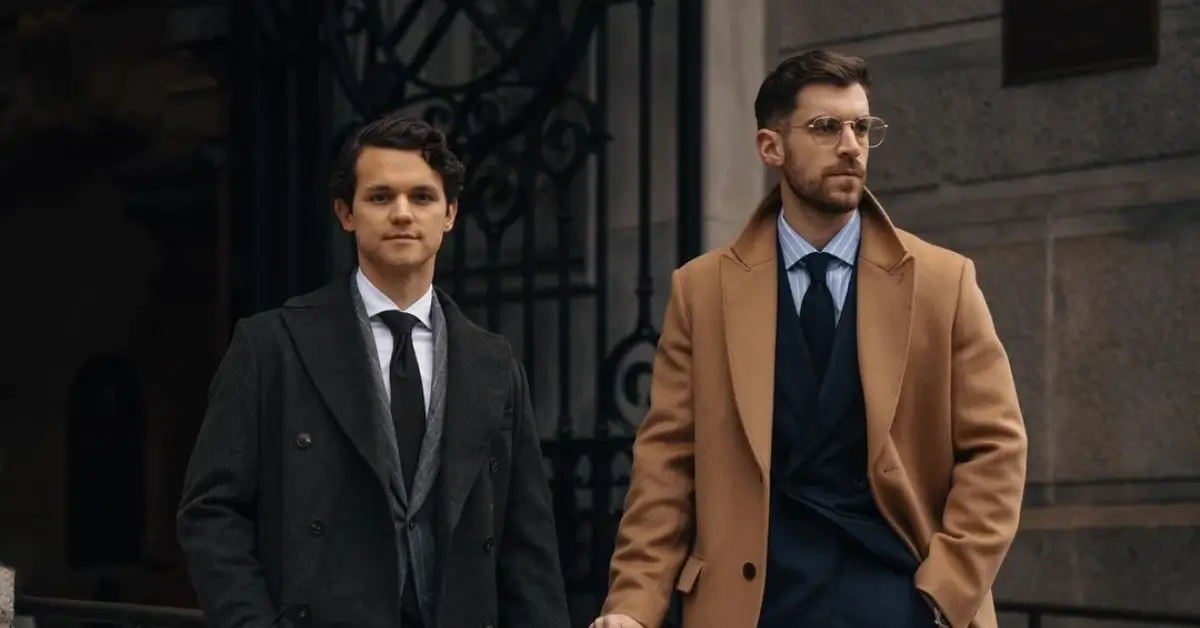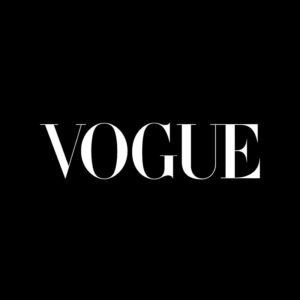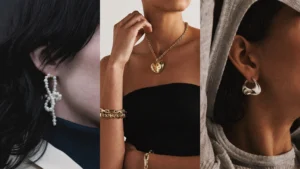
Free Men's Fashion
Introduction
The term “free men’s fashion” represents this evolution—a space where men are increasingly empowered to explore their identities, experiment with diverse styles, and break away from the constraints of rigid dress codes.
In the world of fashion, men’s style has traditionally been bound by numerous conventions, unspoken rules, and cultural norms. However, with changing times, there has been a remarkable shift towards more liberated and inclusive forms of expression in men’s fashion.
From streetwear to haute couture, men’s fashion today is about personal expression, comfort, and, above all, freedom. This article delves into the concept of free men’s fashion, exploring its origins, the role of cultural movements, the rise of gender-neutral styles, and the fashion industry’s response to this shift.
The Evolution of Men’s Fashion
Historically, men’s fashion has been conservative in nature, defined by practicality and limited choices. The typical male wardrobe, especially in Western society, adhered to functional attire that emphasized simplicity and utility over flamboyance or diversity. Suits, ties, neutral colors, and traditional tailoring were often viewed as markers of masculinity, success, and professionalism.
However, the seeds of free men’s fashion were planted in the late 20th century, when cultural movements such as the hippie era of the 1960s, punk in the 1970s, and hip-hop culture in the 1980s began to challenge established fashion norms. These movements introduced men to colorful, experimental, and eclectic styles that broke away from the monotony of mainstream fashion. Men began adopting styles that were more expressive and reflective of their personal values.
In the 21st century, the rise of digital media and global cultural exchanges accelerated this trend. With fashion bloggers, influencers, and social media platforms, men from all walks of life started experimenting with styles beyond the traditional suit-and-tie ensemble. Fashion became a tool for self-expression, not merely a societal expectation.
The Role of Streetwear in Free Men’s Fashion
Streetwear has arguably played the most significant role in the rise of free men’s fashion. Rooted in skate culture, hip-hop, and urban environments, streetwear introduced a casual, unstructured approach to dressing that resonated with younger generations. Brands like Supreme, Off-White, and A Bathing Ape (BAPE) have gained cult-like followings by creating collections that blend luxury with the casual, rebellious spirit of street culture.
Streetwear redefined what men could wear and still be considered stylish. Hoodies, sneakers, oversized T-shirts, and ripped jeans became fashion staples, not just for weekends or casual outings but for a wide variety of social settings. Streetwear also challenged the idea that fashion should be expensive or exclusive—often mixing high-end brands with thrift store finds and DIY aesthetics.
The impact of streetwear on men’s fashion is profound, much like the creativity behind Diwali gifts. It democratized fashion by making it more accessible and less rigid. Men no longer felt the need to conform to the traditional “rules” of style. Instead, they could mix and match pieces from different cultures, eras, and price points, crafting a unique look that reflected their individual identity.
Gender-Fluid Fashion: Breaking the Binary
Another significant aspect of free men’s fashion is the rise of gender-fluid or gender-neutral clothing. In recent years, designers have increasingly blurred the lines between what is considered “menswear” and “womenswear.” This is not just a trend but a cultural shift that reflects broader conversations about gender identity and inclusivity.
Brands like Gucci, Louis Vuitton, and Balenciaga have led the way in creating collections that challenge traditional gender roles. On the runway, men are seen in skirts, dresses, and traditionally feminine silhouettes, while women are adorned in oversized suits and streetwear staples. The goal is not to make a statement about masculinity or femininity, but rather to offer freedom in how people choose to express themselves through clothing.
Celebrities and influencers have also embraced this movement. Stars like Harry Styles, Jaden Smith, and Lil Nas X have been pivotal in popularizing gender-fluid fashion. They wear clothing that defies the binary expectations of what men should wear, further pushing the boundaries of traditional men’s fashion.
This growing acceptance of gender-fluid fashion is an essential element of free men’s fashion. It challenges the idea that clothing has to fit within the confines of male or female and allows individuals to dress according to their own sense of style, regardless of societal expectations.
The Influence of Social Media and Global Trends
In the age of the internet, fashion has become more interconnected and globalized than ever before. Social media platforms like Instagram, TikTok, and Pinterest have transformed the way people engage with fashion. For men, this has opened up a world of possibilities for discovering new styles, trends, and influences.
Influencers, particularly on Instagram, play a critical role in promoting free men’s fashion. They showcase diverse styles that cater to different body types, cultural backgrounds, and tastes. Whether it’s minimalist fashion, streetwear, or high-end designer looks, men are inspired to step out of their comfort zones and try something new. Fashion is no longer confined to the elite or high fashion runways; it is accessible to everyone with an internet connection.
Moreover, the global nature of the internet means that fashion trends are no longer confined to specific geographic regions. A man in New York can be inspired by street fashion in Tokyo, while someone in London can adopt styles from African or Middle Eastern fashion. This cross-cultural exchange has added richness and depth to free men’s fashion, encouraging men to experiment with a wider array of colors, patterns, and garments.
Sustainability and Ethical Choices in Men’s Fashion
As men’s fashion continues to evolve, there is a growing awareness of the impact of fashion on the environment. Free men’s fashion is not just about breaking away from traditional styles; it also includes making thoughtful and ethical choices regarding what we wear.
Sustainable fashion brands are becoming more popular as consumers seek out eco-friendly options. This shift reflects the changing priorities of the modern man, who values not only style but also the environmental and social implications of his wardrobe choices. Brands like Patagonia, Everlane, and Nudie Jeans focus on producing high-quality, durable garments made from sustainable materials, reducing the overall carbon footprint of the fashion industry.
Thrifting and upcycling have also become key elements of free men’s fashion. Men are increasingly turning to second-hand shops, vintage stores, and even online marketplaces like Depop and Grailed to find unique pieces that reflect their personal style while minimizing waste. This trend not only fosters creativity but also aligns with the growing movement toward conscious consumerism in the fashion world.
Conclusion: Fashion as a Form of Personal Freedom
Free men’s fashion is more than just a trend—it’s a reflection of how societal norms are shifting, allowing for greater freedom of expression in all areas of life. From the rise of streetwear and gender-fluid clothing to the global influence of social media and the push for sustainability, men’s fashion is becoming more diverse, inclusive, and creative than ever before.
Ultimately, free men’s fashion is about empowerment. It encourages men to step away from societal expectations and embrace styles that reflect their true selves. Whether it’s through bold patterns, unconventional silhouettes, or sustainable fashion choices, free men’s fashion opens up a world of possibilities for men to express their individuality without limitations.
As fashion continues to evolve, one thing is clear: the days of rigid dress codes and conventional masculinity are behind us. In their place, a new era of free men’s fashion has emerged—one that celebrates diversity, creativity, and, most importantly, freedom.
FAQ’s
1. What is “free men’s fashion”?
Free men’s fashion refers to the modern evolution of men’s style, where traditional dress codes and cultural expectations are being broken. It emphasizes individuality, comfort, and the freedom for men to experiment with diverse styles. This shift allows men to express their identities without being confined to rigid norms, encouraging creativity and personal expression in fashion choices.
2. How has men’s fashion evolved over the years?
Historically, men’s fashion has been conservative, with limited options focusing on functionality, like suits, ties, and neutral colors. However, from the 1960s onward, cultural movements such as punk, hip-hop, and the rise of streetwear challenged traditional norms. In the 21st century, with the help of digital media, men’s fashion has expanded to include bolder, more expressive styles that reflect personal identity and cultural influences.
3. How has streetwear influenced free men’s fashion?
Streetwear has had a significant impact on free men’s fashion by introducing casual, unstructured, and diverse clothing options. Brands like Supreme and Off-White have blended luxury with everyday styles, making hoodies, sneakers, and oversized clothing fashionable in various social settings. Streetwear democratized men’s fashion, encouraging mixing high-end with thrifted or DIY styles, and creating a culture of individuality and creativity.
4. What role does gender-fluid fashion play in free men’s fashion?
Gender-fluid fashion is a key element of free men’s fashion, as it breaks down the traditional binary between menswear and womenswear. Designers like Gucci and Balenciaga have embraced this trend, offering collections that blur gender lines. It allows men to wear traditionally feminine clothing, such as skirts or dresses, without concern for societal expectations, further promoting freedom of expression and inclusivity in fashion.
5. How are sustainability and ethical choices part of free men’s fashion?
As free men’s fashion evolves, there is a growing focus on sustainability and ethical fashion choices. Modern consumers are more aware of the environmental impact of fashion and are opting for brands that use sustainable materials and ethical production methods. Thrifting, upcycling, and supporting eco-conscious brands are becoming central to free men’s fashion, aligning personal expression with responsible consumerism.






